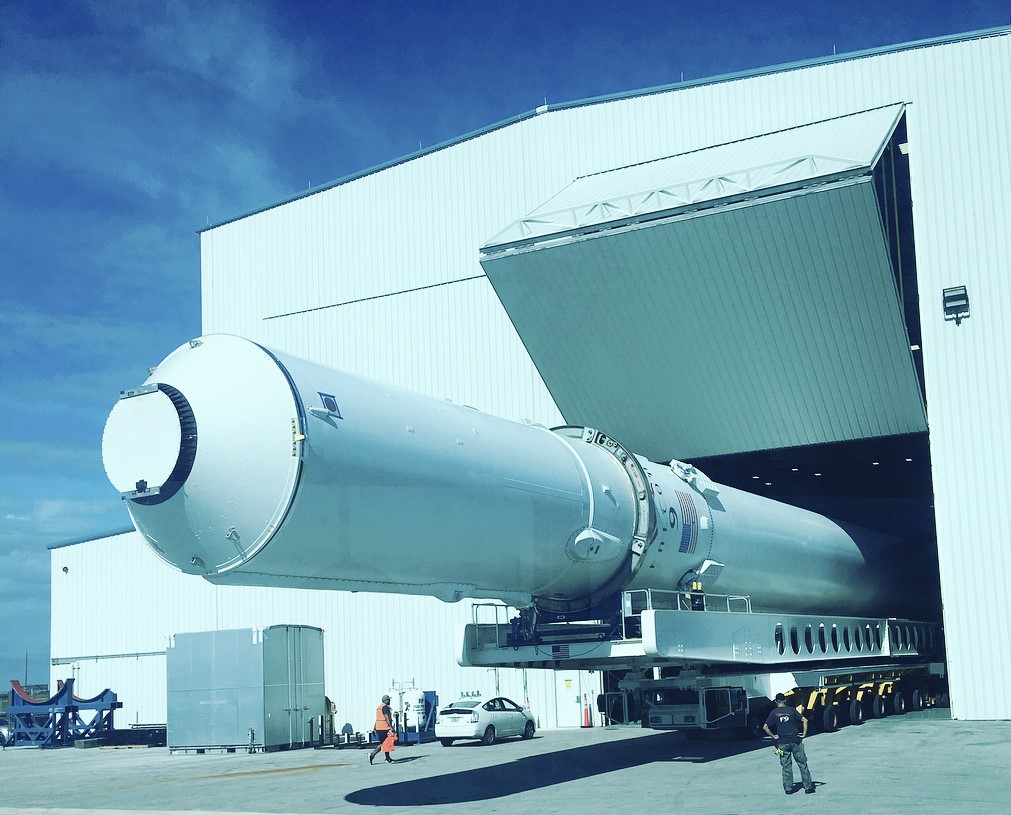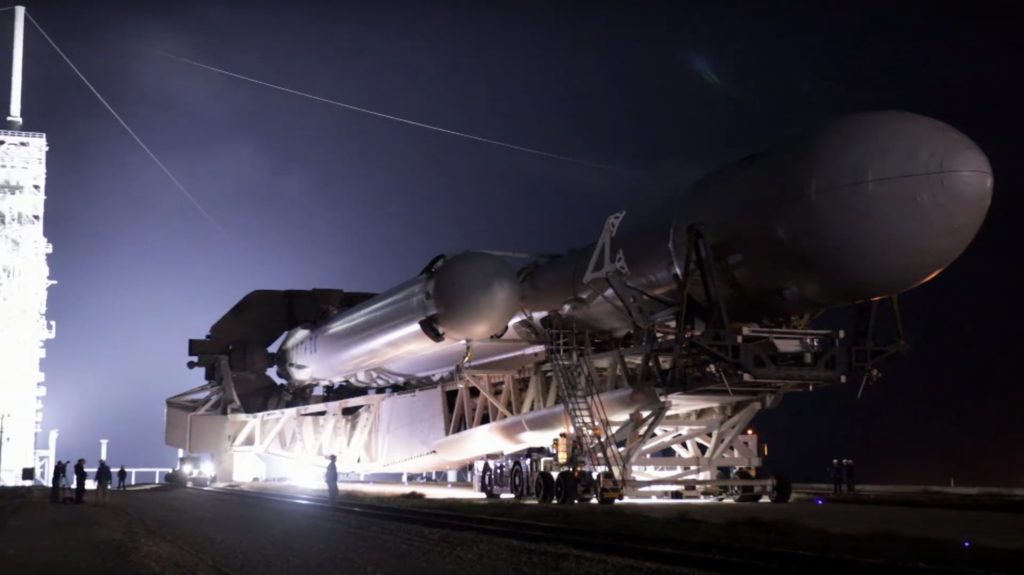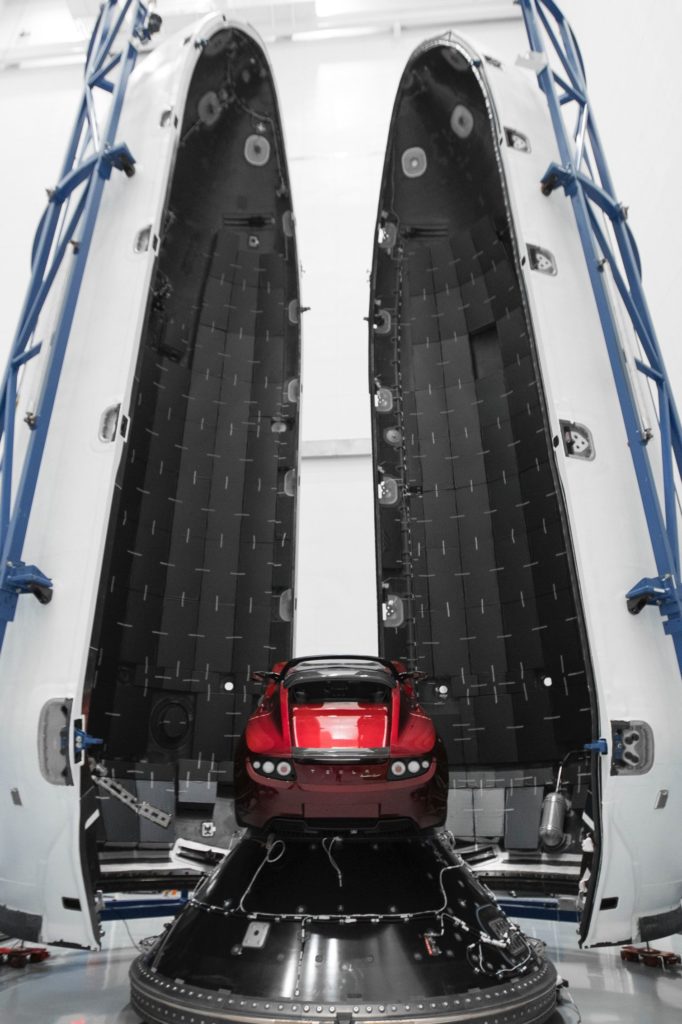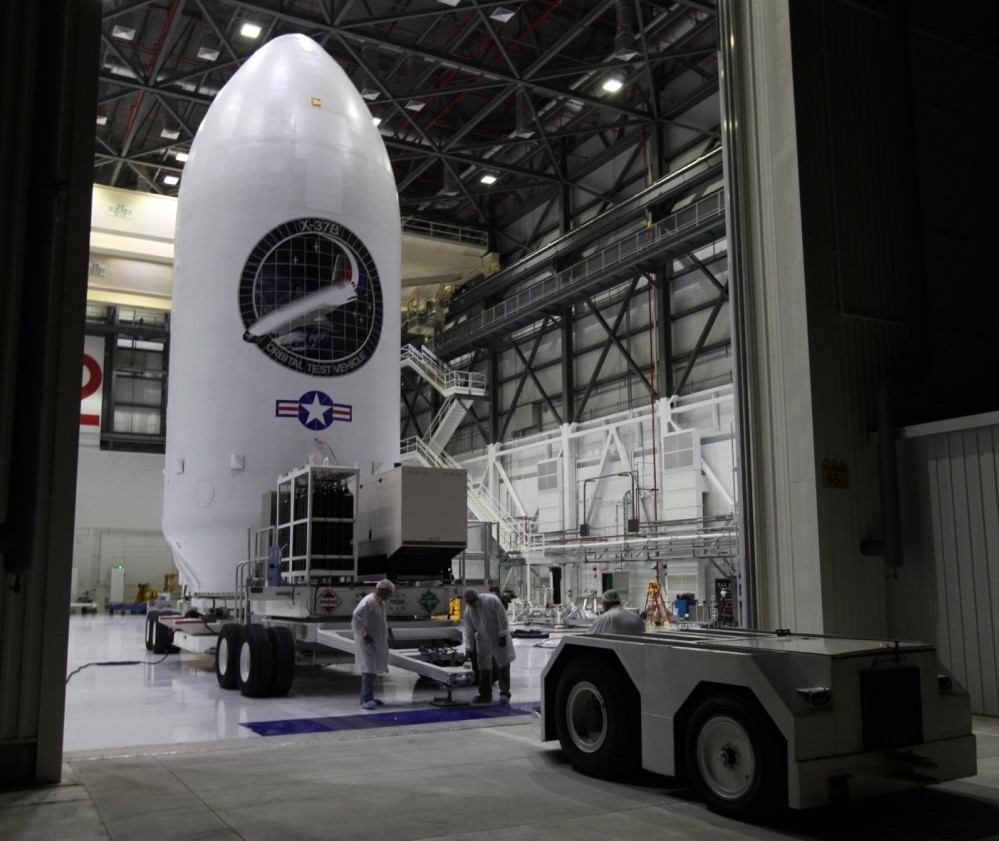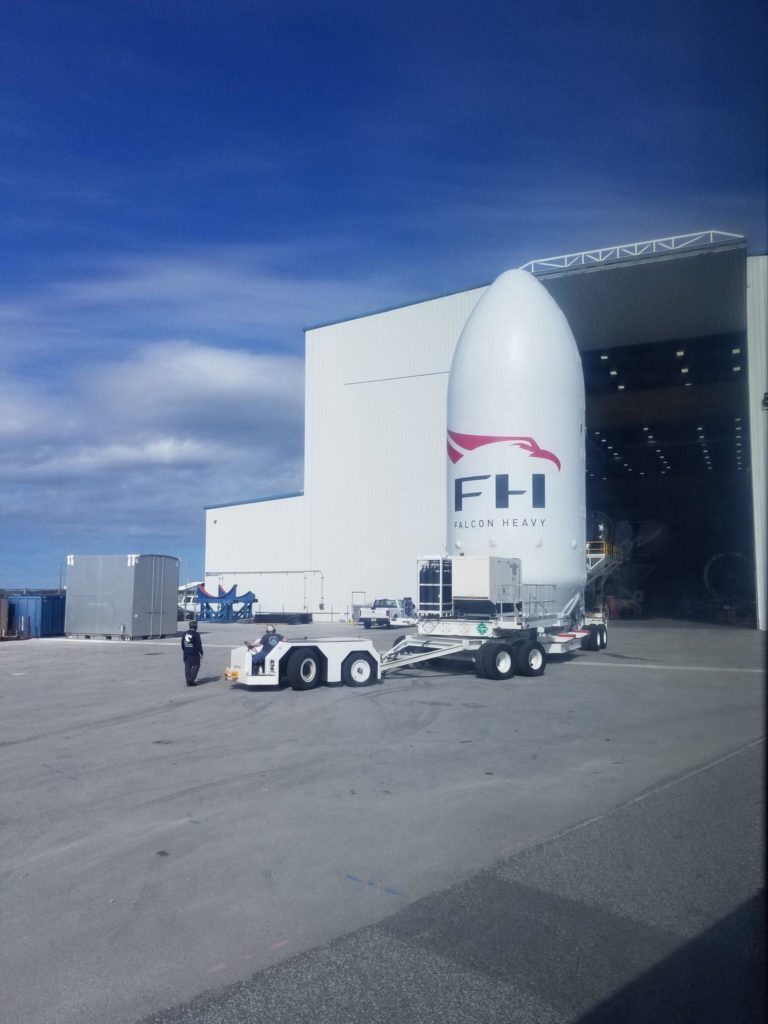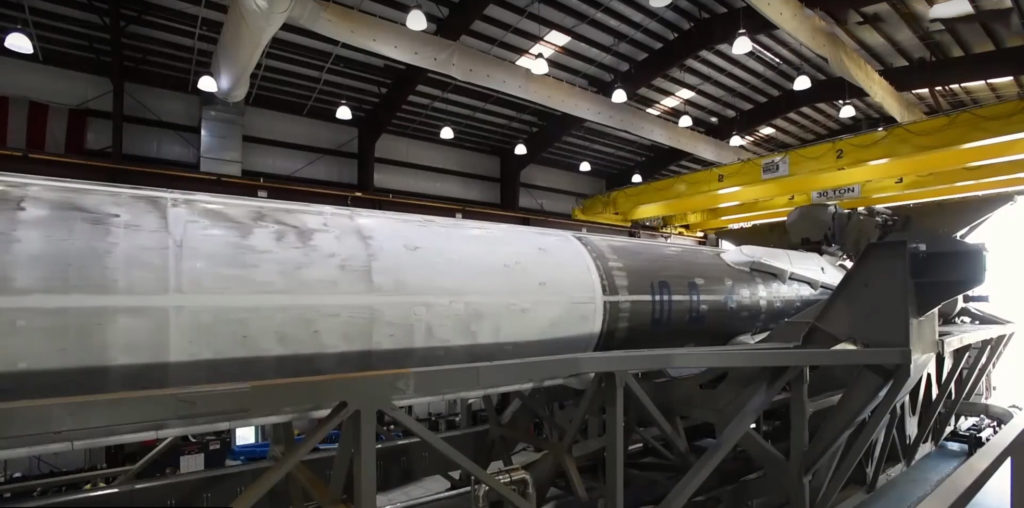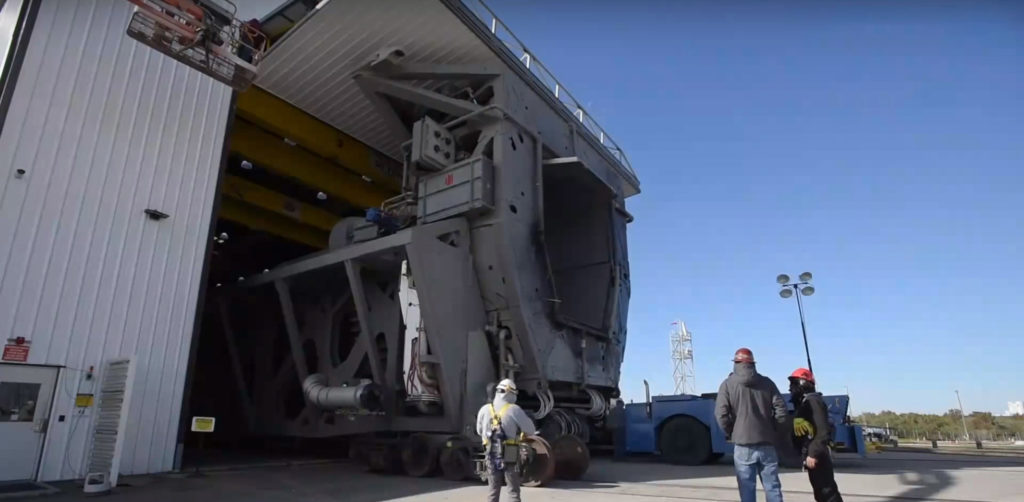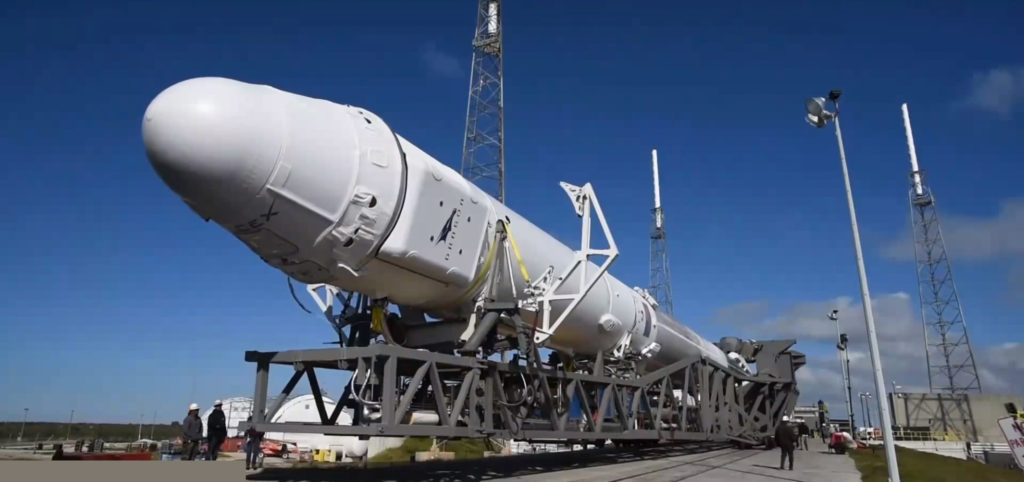
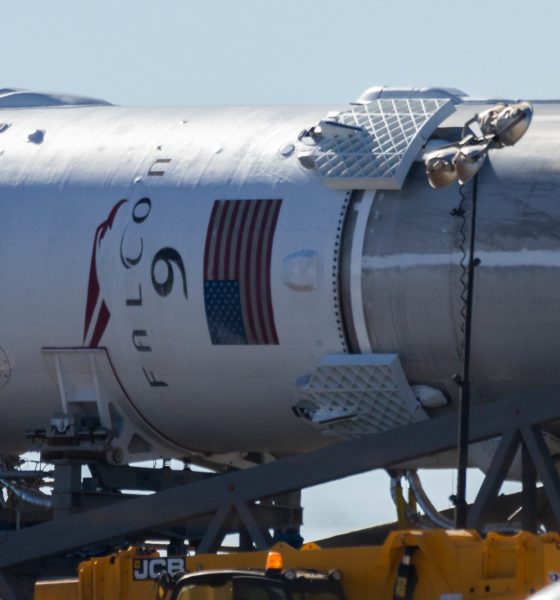
News
US Air Force awards SpaceX $20m contract to support its biggest spy satellites
Slipping beneath the watchful eye of many skilled defense journalists, the government contracting database FPDS.gov indicates that the US Air Force awarded SpaceX more than $20 million in November 2017 to conduct a design study of vertical integration capabilities (VIC). Describing what exactly this means first requires some background.
Vertical whaaaat?
The flood of acronyms and technical terminology that often follow activities of the Federal government should not detract from the significance of this contract award. First and foremost, what exactly is “vertical integration” and why is significant for SpaceX? Not to be confused with more abstract descriptions of corporate organization (vertical integration describes one such style), integration here describes the literal process of attaching satellite and spacecraft payloads to the rockets tasked with ferrying them to orbit.
Likely as a result of its relative simplicity, SpaceX has used a system of horizontal integration for as long as they have been in the business of launching rockets, be it Falcon 1, Falcon 9, or Falcon Heavy. In order to integrate payloads to the rocket horizontally, SpaceX has a number of horizontal integration facilities (HIF) directly beside each of their three launch pads – two in Florida, one in California. After being transported from the company’s Hawthorne, CA rocket factory, Falcon 9 and Heavy boosters, second stages, payload fairings, and other miscellaneous components are all brought into a HIF, where they are craned off of their transporters (a semi-trailer in most cases) and placed on horizontal stands inside the building.
- The large, white crawler underneath Falcon 9 is one of several methods of transportation SpaceX uses. (Instagram /u/robhubar)
- Falcon Heavy is composed of a Falcon 9 upper stage and three Falcon 9-class boosters. (SpaceX)
- The fully-integrated Falcon Heavy rolls out to Pad 39A. For vertical integration, think of this… but vertical. (SpaceX)
While in the HIF, all three main components are eventually attached together (integrated). The booster or first stage (S1) has its landing legs and grid fins installed soon after arrival at the launch site, followed by the mating of the first and second stages. Once these two primary components of the rocket are attached, the entire stack – as the mated vehicle is called – is once again lifted up by cranes inside the facility and placed atop what SpaceX calls the strongback (also known as the Transporter/Launcher/Erector, or TEL). A truly massive steel structure, the TEL is tasked with carrying the rocket to the launch pad, typically a short quarter mile trek from the integration facility. Once it reaches the pad, the TEL uses a powerful hydraulic lift system to rotate itself and its rocket payload from horizontal to vertical. It may look underwhelming, but it serves to remember that a complete Falcon 9/Heavy and its TEL are both considerably more than twice as tall as a basketball court is long.
Falcon Heavy goes vertical pic.twitter.com/uG1k0WISv1
— Elon Musk (@elonmusk) January 5, 2018
Once at the pad, the TEL serves as the rocket’s connection to the pad’s many different ground systems. Crucially, it is tasked with loading the rocket with at least four different fuels, fluids, and gases at a broad range of temperatures, as well as holding the rocket down with giant clamps at its base, providing connection points to transmit a flood of data back to SpaceX launch control. SpaceX’s relatively unique TEL technology is to some extent the foundation of the company’s horizontal integration capabilities – such a practice would be impossible without reliable systems and methods that allow the rocket to be easily transported about and connected to pad systems.
Still, after the Amos-6 mishap in September 2016, which saw a customer’s payload entirely destroyed by a launch vehicle anomaly ahead of a static fire test, SpaceX has since changed their procedures, and now conducts those static fire tests with just the first and second stages – the payload is no longer attached until after the test is completed. For such a significant decrease in risk, the tradeoff of an additional day or so of work is minimal to SpaceX and its customers. Once completed, the rocket is brought horizontal and rolled back into the HIF, where the rocket’s payload fairing is finally attached to the vehicle while technicians ensure that the rocket is in good health after a routine test-ignition of its first stage engines.
- Elon Musk’s Roadster seen before being encapsulated in Falcon Heavy’s massive payload fairing. Below the Tesla is the payload adapter, which connects it to the rocket. (SpaceX)
- Imagine this building-sized fairing traveling approximately TWO MILES PER SECOND. (USAF)
- Finally, the fairing is transported vertically to the HIF, where it can be flipped horizontal and attached to its rocket. (Reddit /u/St-Jed-of-Calumet)
Before being connected to the rocket, the payload itself must also go through its own integration process. Recently demonstrated by a flurry of SpaceX images of Falcon Heavy and its Roadster payload, this involves attaching the payload to a payload adapter, tasked with both securing the payload and fairing to the launch vehicle. Thankfully, the fairing is far smaller than the rocket itself, and this means it can be vertically integrated with the payload and adapter. The final act of joining and bolting together the two fairing halves is known as encapsulation – at which point the payload is now snug inside the fairing and ready for launch. Finally, the integrated payload and fairing are lifted up by cranes, rotated horizontally, and connected to the top of the rocket’s second stage, marking the completion of the integration process.
A different way to integrate
Here lies the point at which the Air Force’s $20m contract with SpaceX comes into play. As a result of certain (highly classified) aspects of some of the largest military satellites, the Department of Defense (DoD) and National Reconnaissance Office (NRO) prefer or sometimes outright require that their payloads remain vertical while being attached to a given rocket. The United Launch Alliance (ULA), SpaceX’s only competition for military launches, almost exclusively utilizes vertical integration for all of their launches, signified by the immense buildings (often themselves capable of rolling on tracks) present at their launch pads. SpaceX has no such capability, at present, and this means that they are effectively prevented from competing for certain military launch contracts – contracts that are often the most demanding and thus lucrative.
It’s clear that the Air Force itself is the main impetus pushing SpaceX to develop vertical integration capabilities, a reasonable continuation of the military’s general desire for assured access to orbit in the event of a vehicle failure grounding flights for the indefinite future. For example, if ULA or SpaceX were to suffer a failure and be forced to ground their rockets for months while investigating the incident, the DoD could choose to transfer time-sensitive payload(s) to the unaffected company for the time being. With vertical integration, this rationale could extend to all military satellites, not simply those that support horizontal integration.
- A hop and a skip south of 39A is SpaceX’s LC-40 pad. (SpaceX)
- Like all SpaceX pads, horizontal integration is a central feature. (SpaceX)
- LC-40’s brand new TEL carries a flight-proven Falcon 9 and Dragon out to the pad. (SpaceX)
Fittingly, the ability to vertically integrate satellites is likely a necessity if SpaceX hopes to derive the greatest possible value from its recently and successfully introduced Falcon Heavy rocket, a highly capable vehicle that the government is likely very interested in. Although the specific Air Force contract blandly labels it a “Design Study,” (FPDS.gov account required) its hefty $21 million award may well be far more money than SpaceX needs to design a solution. In fact, knowing SpaceX’s famous ability to develop and operate technologies with exceptional cost efficiency, it would not be shocking to discover that the intrepid launch company has accepted the design study grant and instead jumped head-first into prototyping, if not the construction of an operational solution. More likely than not, SpaceX would choose to take advantage of the fixed tower (known as the Fixed Service Structure, FSS) currently present at Pad 39A, atop which a crane and work platforms could presumably be attached
Intriguingly, it is a real possibility that Fairing 2.0 – its first launch scheduled to occur as early as Feb. 21 – could have been upgraded in part to support present and future needs of the Department of Defense, among numerous other benefits. Fairing 2.0’s larger size may have even been precipitated by physical requirements for competing for and dealing with the largest spysats operating by the DoD and NRO, although CEO Elon Musk’s characterization of that change as a “slightly larger diameter” could suggest otherwise. On the other hand, Musk’s offhand mention of the possibility of significantly lengthening the payload fairing is likely aimed directly at government customers in both the civil and military spheres of space utilization. Time will tell, and it certainly will not hurt SpaceX or its customers if Fairing 2.0 is also considerably easier to recover and reuse.
Under consideration. We’ve already stretched the upper stage once. Easiest part of the rocket to change. Fairing 2, flying soon, also has a slightly larger diameter. Could make fairing much longer if need be & will if BFR takes longer than expected.
— Elon Musk (@elonmusk) February 12, 2018
Ultimately, it should come as no surprise that SpaceX would attempt to leverage this contract and the DoD’s interest in ways that might also facilitate the development of the company’s futuristic BFR rocket, intended to eventually take humans to the Moon, Mars, and beyond. As shown by both 2016 and 2017 iterations of the vehicle, it appears that SpaceX intends to use vertical integration to attach the spaceship (BFS) to the booster (BFR). While it’s unlikely that this Air Force contract will result in the creation of a vertical integration system that could immediately be applied to or replicated for BFS testing, the experience SpaceX would gain in the process of building something similar for the Air Force would be invaluable and essentially kill two birds with one stone.

While now outdated, SpaceX’s 2016 Mars rocket featured a giant crane used for vertical integration. BFR appears to use the same approach. (SpaceX)
Follow along live as I and launch photographers Tom Cross and Pauline Acalin cover these exciting proceedings live and in person.
Teslarati – Instagram – Twitter
Tom Cross – Twitter
Pauline Acalin – Twitter
Eric Ralph – Twitter

Elon Musk
Elon Musk and Tesla AI Director share insights after empty driver seat Robotaxi rides
The executives’ unoccupied tests hint at the rapid progress of Tesla’s unsupervised Robotaxi efforts.
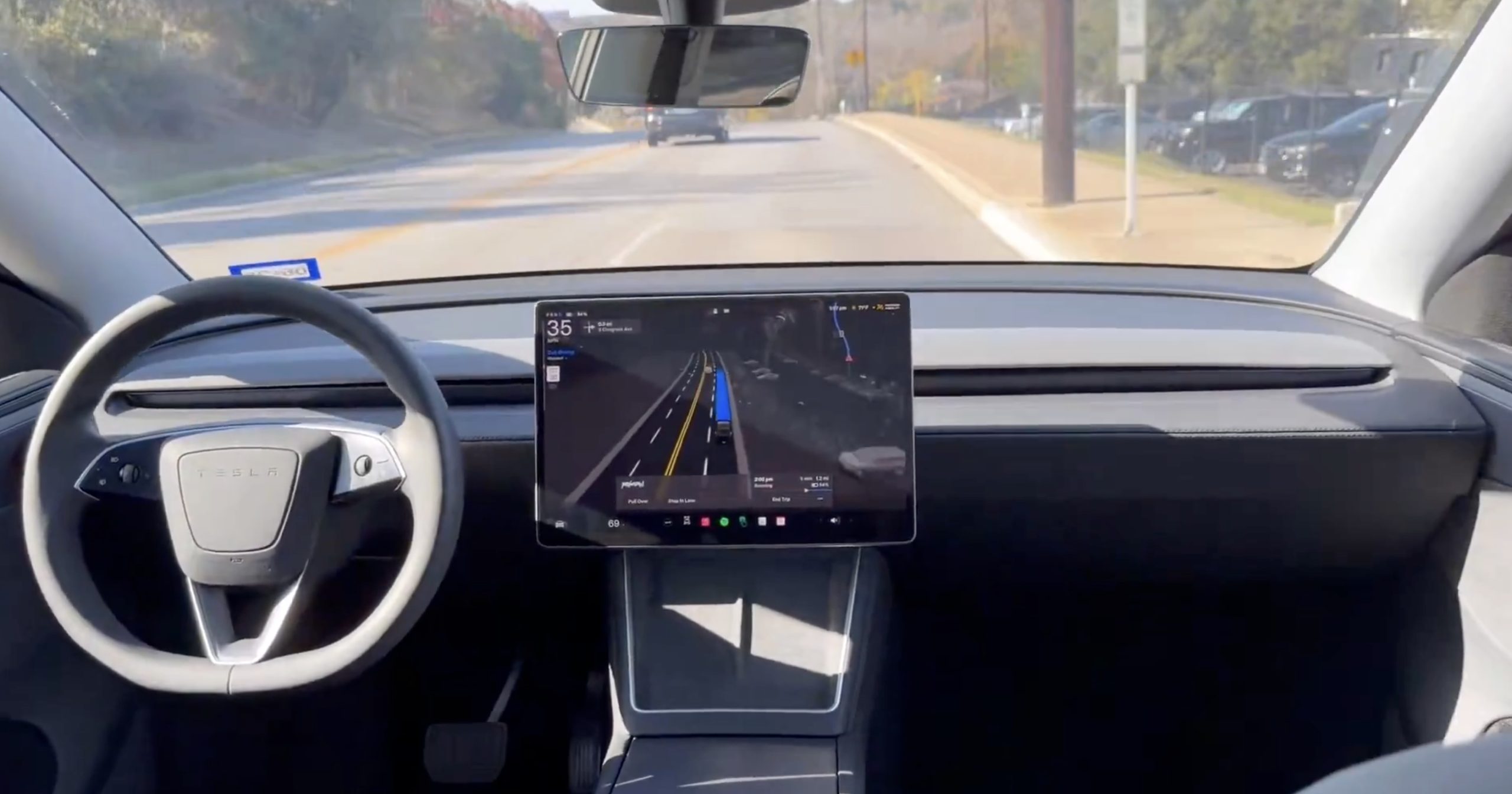
Tesla CEO Elon Musk and AI Director Ashok Elluswamy celebrated Christmas Eve by sharing personal experiences with Robotaxi vehicles that had no safety monitor or occupant in the driver’s seat. Musk described the system’s “perfect driving” around Austin, while Elluswamy posted video from the back seat, calling it “an amazing experience.”
The executives’ unoccupied tests hint at the rapid progress of Tesla’s unsupervised Robotaxi efforts.
Elon and Ashok’s firsthand Robotaxi insights
Prior to Musk and the Tesla AI Director’s posts, sightings of unmanned Teslas navigating public roads were widely shared on social media. One such vehicle was spotted in Austin, Texas, which Elon Musk acknowleged by stating that “Testing is underway with no occupants in the car.”
Based on his Christmas Eve post, Musk seemed to have tested an unmanned Tesla himself. “A Tesla with no safety monitor in the car and me sitting in the passenger seat took me all around Austin on Sunday with perfect driving,” Musk wrote in his post.
Elluswamy responded with a 2-minute video showing himself in the rear of an unmanned Tesla. The video featured the vehicle’s empty front seats, as well as its smooth handling through real-world traffic. He captioned his video with the words, “It’s an amazing experience!”
Towards Unsupervised operations
During an xAI Hackathon earlier this month, Elon Musk mentioned that Tesla owed be removing Safety Monitors from its Robotaxis in Austin in just three weeks. “Unsupervised is pretty much solved at this point. So there will be Tesla Robotaxis operating in Austin with no one in them. Not even anyone in the passenger seat in about three weeks,” he said. Musk echoed similar estimates at the 2025 Annual Shareholder Meeting and the Q3 2025 earnings call.
Considering the insights that were posted Musk and Elluswamy, it does appear that Tesla is working hard towards operating its Robotaxis with no safety monitors. This is quite impressive considering that the service was launched just earlier this year.
Elon Musk
Starlink passes 9 million active customers just weeks after hitting 8 million
The milestone highlights the accelerating growth of Starlink, which has now been adding over 20,000 new users per day.

SpaceX’s Starlink satellite internet service has continued its rapid global expansion, surpassing 9 million active customers just weeks after crossing the 8 million mark.
The milestone highlights the accelerating growth of Starlink, which has now been adding over 20,000 new users per day.
9 million customers
In a post on X, SpaceX stated that Starlink now serves over 9 million active users across 155 countries, territories, and markets. The company reached 8 million customers in early November, meaning it added roughly 1 million subscribers in under seven weeks, or about 21,275 new users on average per day.
“Starlink is connecting more than 9M active customers with high-speed internet across 155 countries, territories, and many other markets,” Starlink wrote in a post on its official X account. SpaceX President Gwynne Shotwell also celebrated the milestone on X. “A huge thank you to all of our customers and congrats to the Starlink team for such an incredible product,” she wrote.
That growth rate reflects both rising demand for broadband in underserved regions and Starlink’s expanding satellite constellation, which now includes more than 9,000 low-Earth-orbit satellites designed to deliver high-speed, low-latency internet worldwide.
Starlink’s momentum
Starlink’s momentum has been building up. SpaceX reported 4.6 million Starlink customers in December 2024, followed by 7 million by August 2025, and 8 million customers in November. Independent data also suggests Starlink usage is rising sharply, with Cloudflare reporting that global web traffic from Starlink users more than doubled in 2025, as noted in an Insider report.
Starlink’s momentum is increasingly tied to SpaceX’s broader financial outlook. Elon Musk has said the satellite network is “by far” the company’s largest revenue driver, and reports suggest SpaceX may be positioning itself for an initial public offering as soon as next year, with valuations estimated as high as $1.5 trillion. Musk has also suggested in the past that Starlink could have its own IPO in the future.
News
NVIDIA Director of Robotics: Tesla FSD v14 is the first AI to pass the “Physical Turing Test”
After testing FSD v14, Fan stated that his experience with FSD felt magical at first, but it soon started to feel like a routine.

NVIDIA Director of Robotics Jim Fan has praised Tesla’s Full Self-Driving (Supervised) v14 as the first AI to pass what he described as a “Physical Turing Test.”
After testing FSD v14, Fan stated that his experience with FSD felt magical at first, but it soon started to feel like a routine. And just like smartphones today, removing it now would “actively hurt.”
Jim Fan’s hands-on FSD v14 impressions
Fan, a leading researcher in embodied AI who is currently solving Physical AI at NVIDIA and spearheading the company’s Project GR00T initiative, noted that he actually was late to the Tesla game. He was, however, one of the first to try out FSD v14.
“I was very late to own a Tesla but among the earliest to try out FSD v14. It’s perhaps the first time I experience an AI that passes the Physical Turing Test: after a long day at work, you press a button, lay back, and couldn’t tell if a neural net or a human drove you home,” Fan wrote in a post on X.
Fan added: “Despite knowing exactly how robot learning works, I still find it magical watching the steering wheel turn by itself. First it feels surreal, next it becomes routine. Then, like the smartphone, taking it away actively hurts. This is how humanity gets rewired and glued to god-like technologies.”
The Physical Turing Test
The original Turing Test was conceived by Alan Turing in 1950, and it was aimed at determining if a machine could exhibit behavior that is equivalent to or indistinguishable from a human. By focusing on text-based conversations, the original Turing Test set a high bar for natural language processing and machine learning.
This test has been passed by today’s large language models. However, the capability to converse in a humanlike manner is a completely different challenge from performing real-world problem-solving or physical interactions. Thus, Fan introduced the Physical Turing Test, which challenges AI systems to demonstrate intelligence through physical actions.
Based on Fan’s comments, Tesla has demonstrated these intelligent physical actions with FSD v14. Elon Musk agreed with the NVIDIA executive, stating in a post on X that with FSD v14, “you can sense the sentience maturing.” Musk also praised Tesla AI, calling it the best “real-world AI” today.
